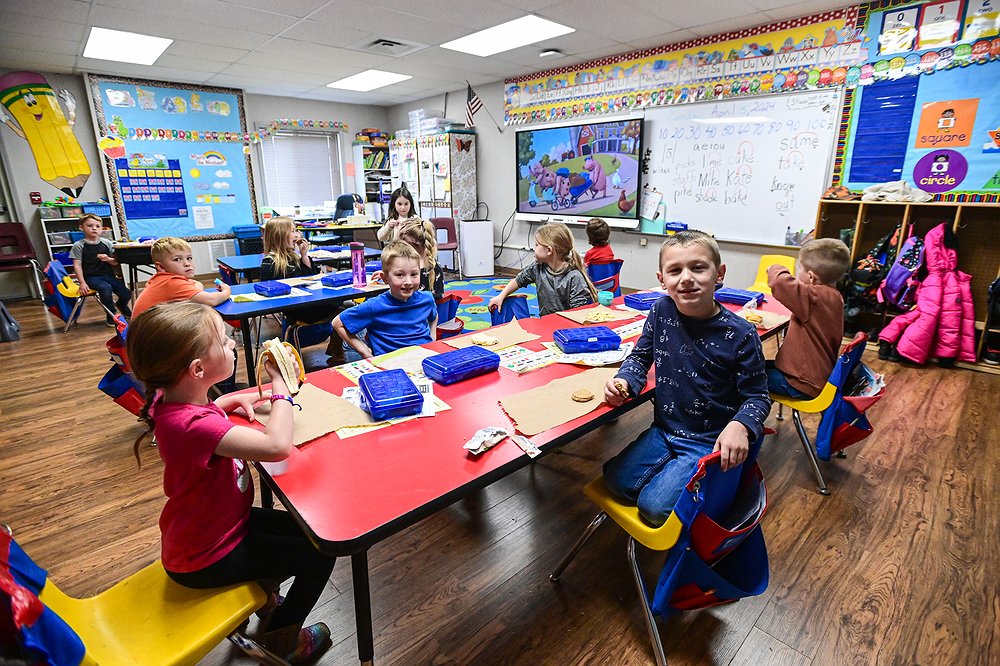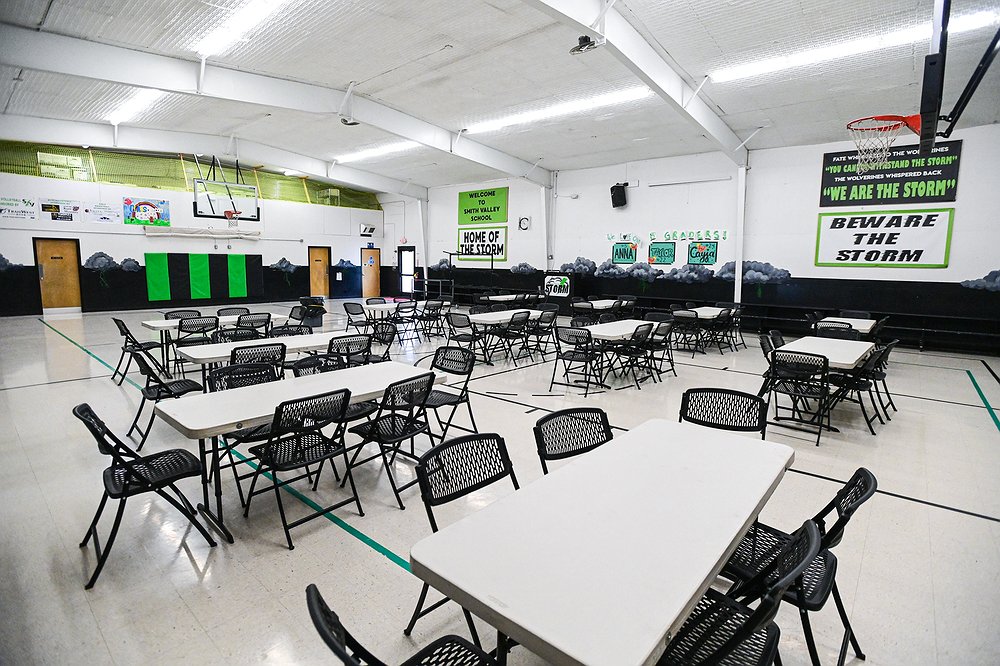Smith Valley seeks approval for $1.8M bond to rebuild classrooms gutted by mold and asbestos
A $1.8 million bond issue is on the ballot to restore a building of Smith Valley School that was gutted to remove mold and asbestos.
“This is an emergency [request],” Smith Valley Superintendent and Principal Dawn Matt said.
The original one-room schoolhouse was built in 1910 with one classroom added in 1941 and three in 1965, according to the district.
Closing the building displaced roughly 60 students in the two kindergarten classrooms and two first-grade classrooms. The proposed plan is to rebuild the facility for sixth, seventh and eighth graders. First and second grade will be housed in Smith Valley’s main building, which contains the majority of the district’s classrooms and the main office.
The decision to separate middle schoolers was an easy one considering the differences in ages and maturity level of adolescents versus elementary students.
“They’re just physically bigger. When the halls are crowded, and you’ve got the little kids, it’s just too crowded,” Matt added.
If the 20-year bond issue is approved, owners of homes valued at $300,000 can expect annual taxes to increase by $26.01. Owners of homes valued at $500,000 can anticipate a $43.35 increase.
Smith Valley School has secured $277,777 in emergency state funding for the project. The school has also earmarked approximately $276,052 total from a miscellaneous fund and an interlocal fund. The money comes from the sale of Boorman School and unused year-end money.
“It’s not enough to cover the price tag of taking care of this, but it certainly helped. Otherwise, we would have had to add that to our bill,” Matt said.
When Matt joined the district in 2022, one of the first items of business was replacing a water line that broke. Everything seemed to snowball from there.
“We had a huge water leak underneath this building. It happened in the summer,” she said, standing in the gutted facility referred to as the “300 building.”
The following winter, some staff and students were experiencing physical symptoms and voiced concerns about mold in the building. Matt said she asked maintenance staff to check the building during spring break in March 2023.
“I said take ladders … lift up the drop ceiling … take flashlights and look up there,” she said.
Behind the drop ceiling, an extensive amount of visible mold clung to insulation and walls.
“We had people come in and they tested to find out what kind of mold it was. I got everybody out of here within a week,” Matt said.
Inadequate ventilation and condensation are believed to have caused mold to grow.
A mold allergy can cause symptoms such as sneezing; runny/stuffy nose; cough; postnasal drip; itchy eyes, nose and throat; watery eyes and dry skin; symptoms can range in severity, according to the Mayo Clinic and Centers for Disease Control and Prevention. Mold exposure may also exacerbate asthma symptoms or trigger an attack.
Due to the age of the building it had to be inspected for asbestos before mold remediation could begin. When disturbed, asbestos fibers and dust may be released into the air, which poses a health hazard if inhaled or ingested, according to the Environmental Protection Agency. Asbestos was present in wallboards and mud, Matt said.
A building committee was formed to look at options in moving forward. The committee looked at remodeling the facility, building an addition and demolishing it. The school also looked at the costs of portable classrooms, which Matt said are pricey and come with the added cost of connecting to utilities.
“If we would consider tearing it down you’d still have to remove all the asbestos,” she said.
The district is working with general contractors McKinstry on developing the project.
The committee learned the cost-effective option was to salvage the building and move forward with mold and asbestos remediation.
So far, Smith Valley has spent about $150,000 on the water line replacement, mold remediation, asbestos abatement and engineering services.
With a slight bounce in the entryway, Matt noted how the “bones of the building are rock solid.” Even with a basement, the flooring didn’t creak, which is a different story in the main building.
“A few months ago, I shared with one of the teachers [that] a big wind could come in and it will probably blow down everything except for this because this building is so strong,” she said.
It’s also a piece of Smith Valley’s history.
Once everything was torn out, long narrow strips of wood, called lath, were exposed in the original part of the building, so were the exterior walls, covered in flaking white paint.
In another room, she pointed up to the exposed wood beams making up the ceiling and said she hopes to retain some of the original aspects of the building into a new design.
THE KINDERGARTEN and first-grade classes have moved more than once since the building closed.
Initially, the four classes moved into a building that contains the gym, lunchroom and music room. Partitions were put up and classes moved in.
The setup wasn’t conducive to learning, however, because it was crowded and noisy.
In October, the kindergartners relocated into a staff room in the already tight quarters of the main building. First-graders occupied the lunchroom and music room. The lunchroom is now set up in the gym, which altered the schedule for P.E. classes. Matt said if meals were still eaten in the lunchroom, there could be at least another period or two of gym.
The music teacher now travels room-to-room, with most instruments and materials in storage.
First-grade teacher Melissa Mart said it was a challenge to pack up and move after teaching in the closed building for 11 years. She now teaches in the former lunchroom and while it can get noisy during P.E. classes, the most challenging part is having teaching materials and supplies in storage.
“I’m only teaching with half of my items. I don’t have my manipulatives. I don’t have my reading curriculum. I’m teaching with half of what I need because it’s in storage,” Mart said.
The storage is accessible onsite, but as Matt showed, teachers have to maneuver around stacks of containers and furniture, which get moved around.
“We thought this would be a temporary situation when we first started,” Matt said. “We thought it would be just like a couple of months before it was repaired and it turned out to be more than a year.”
Back in the main building, staff who provide special services such as speech therapy, and occupational therapy moved into the copy room.
The Title 1 room, where remedial math and reading small group instruction takes place, used to be the counselor’s office.
“So we have two groups that will work in here at a time. There are actually three instructors but one will typically be in a classroom or in the P.E. teacher’s office now,” Matt said.
“Right now all the kids meet in one room, kindergarten through eighth. So, sometimes you have the seventh- and eighth-graders with second-graders even though they’re in different parts of the room it’s challenging. You teach them differently,” Matt said.
The school counselor’s office, which is currently an open position the district is looking to fill, was moved into a small room with a staff member who translates text into braille.
The last time a bond passed in Smith Valley was in 2004 for $1.35 million, which funded construction of the main building. The 2004 bonds come off the tax rolls on July 1 and will not overlap with the 2024 bond issue, if approved.
In 2017, Smith Valley attempted to address projected growth and aging facilities through a comprehensive $6 million bond that would have affected facilities from the septic system to the parking lot and included a land purchase. It was overwhelmingly rejected by voters.
The priority on this project is to make the gutted building operational.
“What we want is to make the building usable … so that we can teach and we can be effective at delivering education,” Matt said about the current request.
Ballots may be mailed or hand-delivered to the district office, 2901 U.S. 2 W., Kalispell by May 7. The school will be open from 8 a.m. to 8 p.m. on election day.
For more information, visit www.smithvalleyschool.org/bond-information, email svsclerk@smithvalleyschool.org, or call 756-4535.
Hilary Matheson may be reached at 758-4431 or hmatheson@dailyinterlake.com.
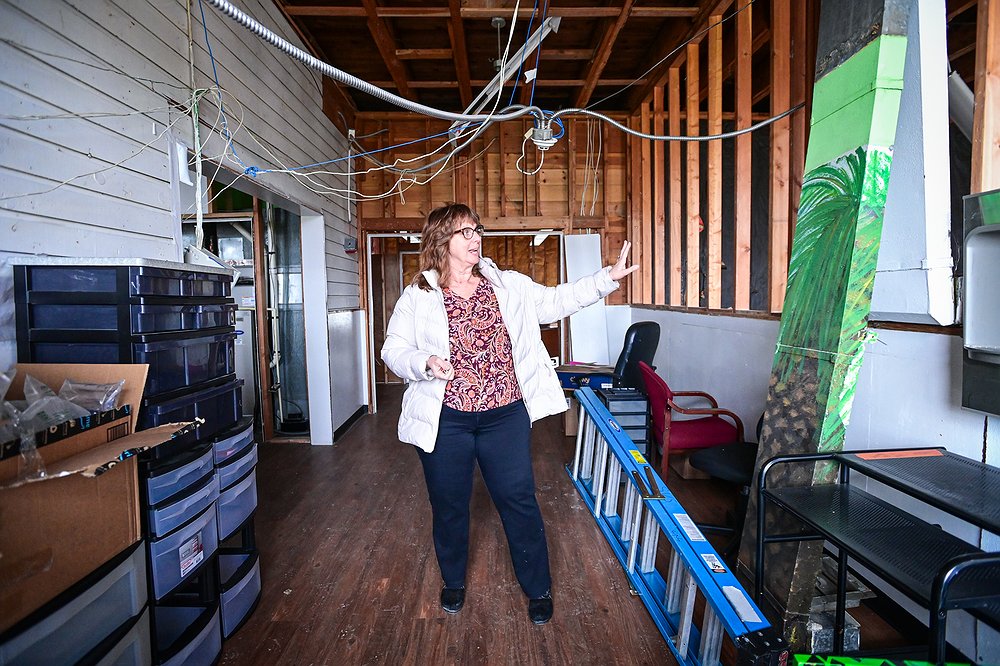 Smith Valley School superintendent and principal Dawn Matt stands in the entryway of what is referred to as the "300 building" on Wednesday, April 17. The building was closed in the spring of 2023 after mold and asbestos were discovered, displacing two kindergarten and two first-grade classes. The school is asking voters to approve a bond issue to rebuild it for middle school students. (Casey Kreider/Daily Inter Lake)
Smith Valley School superintendent and principal Dawn Matt stands in the entryway of what is referred to as the "300 building" on Wednesday, April 17. The building was closed in the spring of 2023 after mold and asbestos were discovered, displacing two kindergarten and two first-grade classes. The school is asking voters to approve a bond issue to rebuild it for middle school students. (Casey Kreider/Daily Inter Lake)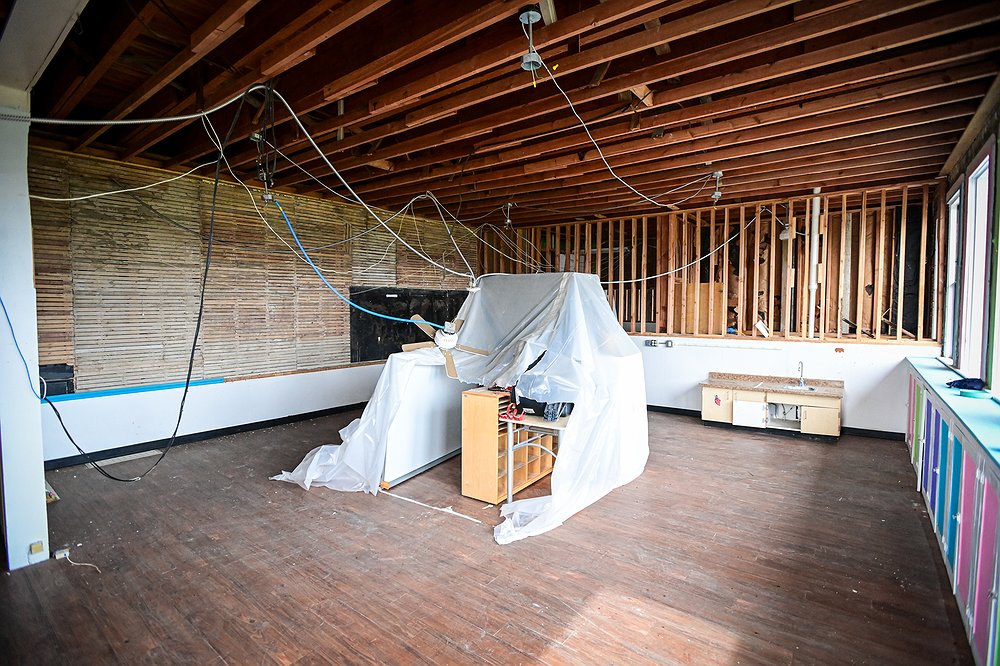 A former classroom inside the "300 building," which used to house kindergarten and first grade at Smith Valley School on Wednesday, April 17. Smith Valley is proposing to rebuild it for middle school students with approval of a bond issue in May. (Casey Kreider/Daily Inter Lake)
A former classroom inside the "300 building," which used to house kindergarten and first grade at Smith Valley School on Wednesday, April 17. Smith Valley is proposing to rebuild it for middle school students with approval of a bond issue in May. (Casey Kreider/Daily Inter Lake) 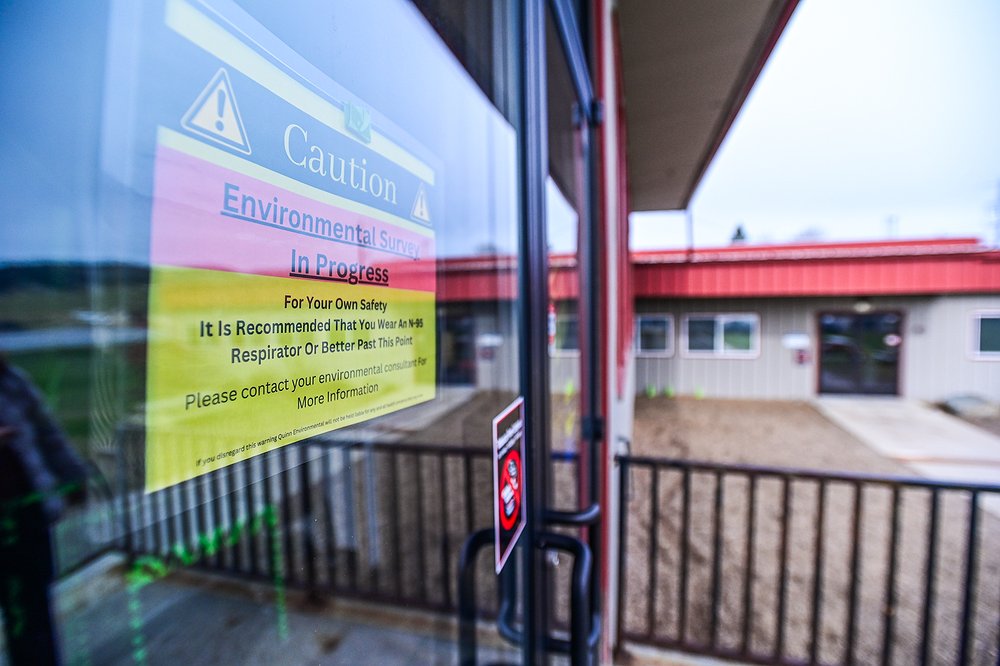 A sign in the door of the "300 building" at Smith Valley School on Wednesday, April 17. The building was closed in the spring of 2023 after mold and asbestos were discovered, which have since been mitigated and abated. (Casey Kreider/Daily Inter Lake)
A sign in the door of the "300 building" at Smith Valley School on Wednesday, April 17. The building was closed in the spring of 2023 after mold and asbestos were discovered, which have since been mitigated and abated. (Casey Kreider/Daily Inter Lake) 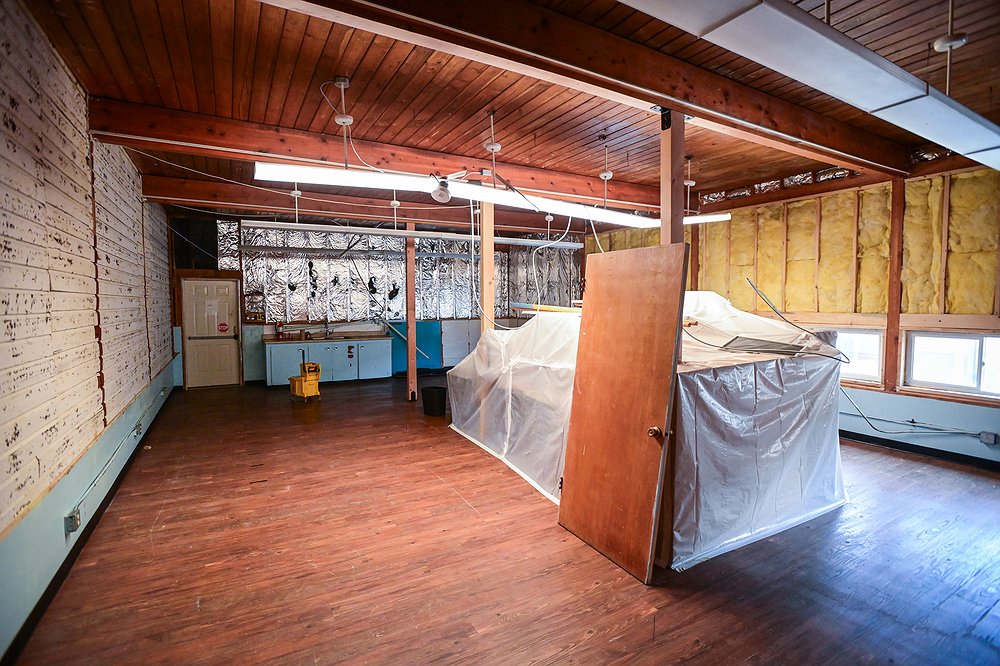 A former classroom inside the "300 building" at Smith Valley School on Wednesday, April 17. Smith Valley is seeking approval of a bond issue to rebuild it for middle school students. (Casey Kreider/Daily Inter Lake)
A former classroom inside the "300 building" at Smith Valley School on Wednesday, April 17. Smith Valley is seeking approval of a bond issue to rebuild it for middle school students. (Casey Kreider/Daily Inter Lake)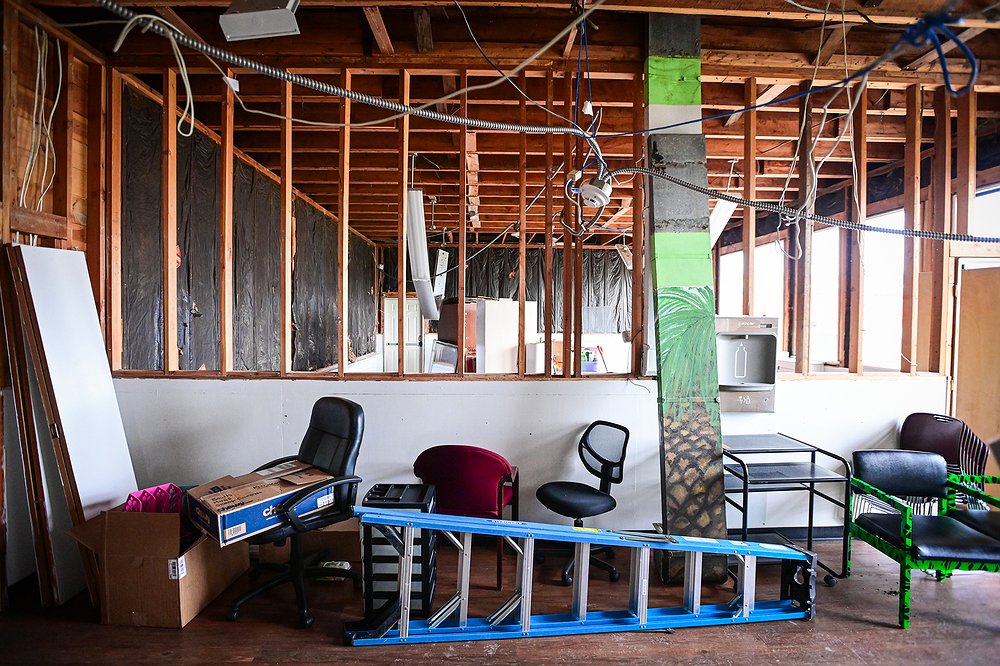 Items line the entryway of the "300 building" at Smith Valley School on Wednesday, April 17. The building was closed in the spring of 2023 after mold and asbestos were discovered, displacing kindergarten and first-graders. (Casey Kreider/Daily Inter Lake)
Items line the entryway of the "300 building" at Smith Valley School on Wednesday, April 17. The building was closed in the spring of 2023 after mold and asbestos were discovered, displacing kindergarten and first-graders. (Casey Kreider/Daily Inter Lake)





